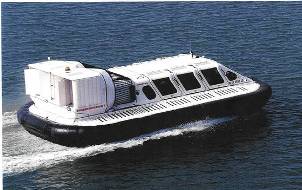Predicting the weather conditions as they would be at a point in the future is called forecasting weather. Traditionally, people used equipment like wind wanes to gauge when rough weather was coming their way or simply relied on historic patterns to predict what the weather was going to be like in the foreseeable future. Weather has been the driving force for human economy since time immemorial and communities that weren’t good at predicting the weather suffered the devastation of famines and floods.
However, with the development of technology, weather forecasting too has grown manifold. We take a look at how key developments in science and technology have helped weather forecasting grow into a science in its own right. The task of predicting the weather that will be observed at a future time is called weather forecasting. As one of the primary objectives of the science of meteorology, weather forecasting has depended critically on the scientific and technological advances in that have taken place since the latter half of the 19th century.
Weather forecasting before mid-1800s
Weather has played a key role in the development of human civilization and scholars from each era have developed their own methods of forecasting weather. The general public used lore to keep track of the weather and keep an eye out for what weather conditions they could expect during a certain time of the year and when certain atmospheric conditions prevailed.
The evolution of meteorology in the late 1800s
Meteorology did not come into existence in the truest sense of the word till the late 1800s. With innovations in the field of communication like the invention of the telegraph, distant towns could communicate what kind of weather they were experiencing and downwind locations could be told what kind of weather conditions to expect. As data collection and communication systems improved, weather scientists and observers were able to collect data about weather patterns and atmospheric forces driving them.
Weather forecasting in the 20th century
in the 1920s, Vilhelm Bjerknes led a group of Norwegian scientists who revolutionized weather forecasting by introducing empirically observed and described the formation of precipitation, cyclones and anticyclones and atmospheric circulation systems through the polar-front theory. Within a decade, meteorological tools like automated balloon-carried packages called “radiosondes” had been invented that provided more information about upper-atmosphere features and relayed them back to the ground via radio waves.
Jule Charney’s contribution to meteorology
Meteorology and weather-forecasting techniques that are used today are mostly based on the works of American meteorologist and theoretician Jule Charney. Through the 1950s, Charney developed a numerical model of weather prediction complete with mathematical equations that could explain the physics behind weather patterns. these numerical theories are still used in computerized weather prediction system.
The process of weather forecasting
Weather forecasting consists of three major steps:
i) Observation and analysis of data
ii) Find the future state of the atmosphere through extrapolation
iii) Using particular variables to make a prediction
Numerical forecasting techniques are most accurate for periods up to 12 hours ahead though similar techniques can be used to predict what weather would be like up to 7 days ahead. Statistical forecast guidance is used along with numerical data to make extended-range forecasts to predict weather for 7 days+ in the future. Statistical guidance is exclusively used by climate prediction centers to issue one-month or three-month average weather patterns and short-term climate forecasts.
Technologies used in weather forecasting
Thanks to movies like Twister and other disaster movies, most people believe that weather forecasting is done by simulation software sitting on computers national weather centers. Even though simulation software is an integral part of weather forecasting technology, the fact remains that predicting the weather requires a lot of data collection from a number of different sources.
Most such data comes from meteorological observatories located around the world which coordinates its reading and data with the information collected by meteorological satellites, weather radars, aircrafts, and ships at sea, radiosondes and surface stations. Regional and global centers rely on agencies like the WMO (World Meteorological Organization) and its GTS (Global Telecommunications System) technologies to obtain weather data around the world and in their region in their vicinity.
Around the world, supercomputers serving national weather and meteorological centers keep processing the mountains of data thrown at them from various sources. Most such centers keep a few supercomputers handy- one for local weather forecasting, one for the national weather forecasting and one for global weather prediction. Regions that are prone to extreme weather conditions like hurricanes, cyclones, typhoons, gale force winds, extreme precipitation etc. also use multiple other supercomputer setups to keep an eye on these weather patterns.


